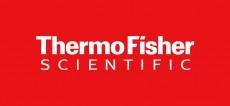Girindus posts first profit since IPO
profit since it was floated on the stock exchange in 2000 in the
last quarter of 2003, as sales rose 16 per cent to €32 million.
This is the third year in a row that a double-digit increase has been achieved and looks particularly positive in light of the problems affecting other companies manufacturing active pharmaceutical ingredients (APIs) for the drug industry.
For example, just yesterday Swiss group Lonza reported steep declines in sales and profits in 2003 that prompted the departure of chief executive Markus Gemuend.
Girindus' finance director, Peter Bergsteiner, told In-Pharmatechnologist.com that the growth was driven by an increase in recognition in the marketplace, as well as more business in the US helped by an increase in the salesforce. The US now accounts for almost a third of all Girindus turnover and, without the effects of the euro's strength against the dollar, the firm would have posted a pretax profit in 2003.
Meanwhile, a step up in sales performance can be expected in 2005, he said, as projects currently in clinical trials come to market and a recent focus on supply oligonucleotides starts to pay off.
For the full-year, earnings before interest, taxes, depreciation and amortisation (EBITDA) were in negative territory to the tune of €400,000, an improvement on the €1 million loss made in 2002. But in the last quarter of this year, Girindus achieved sales of €14 million and positive EBIT. Specific figures will not be released until the company's annual general meeting in March.
Substantial headway has been made in the production of oligonucleotides for future DNA/RNA medications at the company's manufacturing site in Cincinnati, Ohio.
Like its peers, Girindus is facing pressure from producers in Asia and elsewhere who are clamouring for a slice of the API production market. The company has a three-pronged startegy to cope with this competition.
One is developing a specialisation in oligonucleotides, which seem to be on the verge of breaking out as a new therapeutic category, with the first product in the category since 1998 due to reach the market later this year, and dozens of others in clinical development.
Another, according to Bergsteiner, is a plan to meet the 'massive' price pressure in the marketplace with a series of agreements with suppliers in Asia. The plan here is to source intermediates that do not have to be made in accordance with current Good Manufacturing Practice regulations, i.e. those used in the early stages of a drug synthesis. As long as full cGMP standards are maintained in the latter stages, there is no regulatory impediment to this approach.
Finally, Girindus is planning to launch a completely new business, providing non-active ingredients (excipients) to the drug industry.
"At present, we see significant changes in our quarterly turnover, which tends to be project driven," said Bergsteiner. The company is hoping to develop its own range of excipients that will be on sale all year round, stabilising sales as they can be sold from stock every quarter.
One possible product from Girindus' excipient portfolio is dihydroxyacetone or DHA, used as a colouring agent for external pharmaceuticals and as a stain in tanning lotions.









